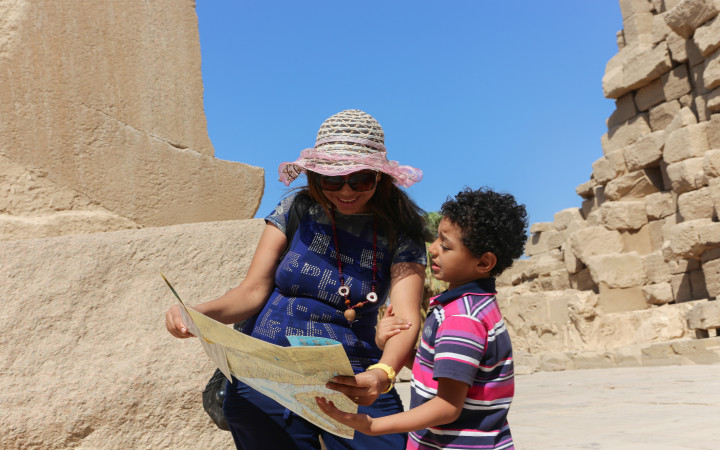Today’s Wonder of the Day was inspired by Easton. Easton Wonders, “How big is the sphinx” Thanks for WONDERing with us, Easton!
Do you enjoy riddles? We have one for you! What has the body of a lion, the face of a human, and a set of wings? Here’s a hint: we’re talking about a mythical creature. That’s right! Today’s Wonder of the Day is all about the sphinx.
What do you picture when you hear the word “sphinx”? Many think of an enormous statue located in northern Egypt. At 66 feet tall and 240 feet long, this colossal structure may date back to 2500 B.C.E. That’s when many experts think the Pharaoh Khafre ordered it built from limestone.
Today, we know this great statue as the Great Sphinx of Giza. It’s believed to be a portrait of Pharaoh Khafre. The structure is also a monolithic statue, which means it was made from a single large block of stone. Experts think thousands of Egyptians worked to carve the Great Sphinx.
The Great Sphinx of Giza is also shrouded in mystery. It isn’t mentioned in any of the hieroglyphs found in the tombs at Giza. For that reason, no one knows what the ancient Egyptians called the statue. We know they didn’t call it a “sphinx,” because that term wasn’t coined for another 2,000 years.
The mythical sphinx may have started in Egypt, but it spread throughout the ancient world. It became a fixture in the stories and art of China, Assyria, and Persia. It also became common in ancient Greece.
The sphinx appears in some very well-known Greek myths. One of these is the story of Oedipus, the mythical king of Thebes. Today, the most widespread version of his story is Oedipus Rex, a tragedy written by Sophocles.
In the story of Oedipus, the sphinx plagued the city of Thebes. She asked every person who wanted to pass through the gate the same riddle: What walks on four legs in the morning, two legs at noon, and three legs at night? When people answered incorrectly, she ate them. No one knew the correct answer to her riddle.
When Oedipus came to Thebes, he met the sphinx. He responded to her riddle with the correct answer (a human being). Thankful to Oedipus for defeating the sphinx, the people of Thebes made him their king.
The sphinx appeared in many other stories and pieces of art from ancient Greece. It is just one mythical creature that spread across centuries and civilizations. What other examples can you think of? The dragon? The griffin? What about the mermaid? There’s no end to the fantastic creatures you can learn more about.
Standards: CCRA.L.3, CCRA.L.6, CCRA.R.1, CCRA.R.2, CCRA.R.4, CCRA.R.10, CCRA.SL.1, CCRA.SL.2, CCRA.W.2, CCRA.L.1, CCRA.L.2




